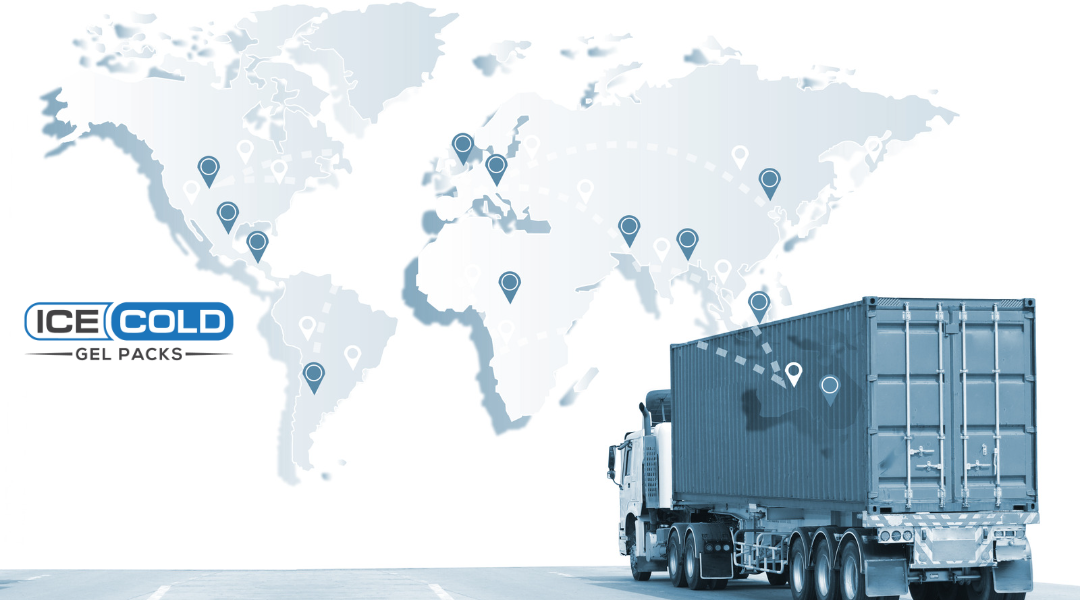If you want to keep food, drinks, medicine or other items cold when traveling long distances it's important to know the rules about what you can and can't bring through airport security. Here are some cold chain solutions that can be used while traveling to get you through security easily:
Portable refrigerators or coolers: These devices are designed to keep items at a specific temperature and are ideal for transporting temperature-sensitive items. They come in various sizes and can be plugged into a car or a wall outlet.
Insulated containers: These can help to keep items at a stable temperature for a short period of time. They are available in various sizes and are useful for transporting smaller quantities of items.
Temperature monitoring devices: These devices can be used to monitor the temperature of items while traveling. They are available in various types, including data loggers, temperature sensors, and indicator labels.
Proper packaging: Properly packaging temperature-sensitive items can help to maintain the cold chain while traveling. For example, using insulated packaging or vacuum-sealed bags can help to keep items at a specific temperature.
Ice packs: These can be used to keep items cold for a short period of time. They are often used in combination with a cooler or portable refrigerator to maintain the cold chain.
Can You Bring Ice Cold Gel Packs On A Plane?
The TSA has very clear and concise guidelines for travel safely while using shipping cold packs, ice gel packs, or any other frozen liquids like water. You are absolutely allowed to bring your reusable cold packs with you in your checked luggage. The liquids inside your ice pack are non-toxic and considered safe for travel unlike hazardous chemicals which are forbidden on airlines.
For carry on bags it does get a bit more complicated. In order to pass TSA guidelines your Ice Cold Gel Pack must be COMPLETELY frozen solid. The TSA does not allow gel packs that are partially frozen or slushy. If your gel pack is melted, slushy, or partially thawed it must meet the TSA 3-1-1 rule.
Meaning all liquids must be less than 3.5 ounces, stored in a clear plastic bag, and remember, only one bag per traveler is allowed in your carryon luggage. Generally speaking, gel cold packs are best for maintaining the temperature of chilled goods above 32 degrees Fahrenheit (0 degrees Celsius).
It's important to note that different temperature-sensitive items have different temperature requirements. It's important to follow the manufacturer's instructions for storing and transporting these items to ensure that they remain safe and effective. If you have any concerns or questions, it's best to consult with a healthcare professional or the manufacturer.
Benefits Of Cold Packs.
Our Ice Cold Gel Packs are perfect for shipments of perishable items that must not freeze. Our formula is non-toxic and does not become freezing cold; rather, its melting point is about 32°F, keeping the product at the perfect temperature for the entirety of the shipment. The weight and starting temperature of the item will determine the temperature range, usually 2-8°C.
Ice Cold Gel Packs are also great for prolonging the life of dry ice used to ship frozen goods. Our ice packs provide more extended coverage for frozen products while in transit when used alongside dry ice without reaching temperatures that will damage products sensitive to freezing.
During colder months, cold packs can be put into place at room temperature in order to protect delicate items from frigid temperatures.
Packaging And Shipping with ICGP
FedEx® recommends that you package perishables for a minimum transit time of 30 hours and ship them via FedEx First Overnight®, FedEx Priority Overnight®, or your preferred freight. The best shipping container for cold packages and storage is a two-inch thick urethane insulated box, tested to lose only 5 pounds for a 10-quart storage volume every 24 hours. When packing items in the container, put the product and any gel packs as close together as possible.
If using dry ice, be sure to pack that on top in order to regulate the inner temperature. Fill any empty space with wadded newspaper, styrofoam peanuts or bubble packs, as any dead-air space will cause the Ice Cold Gel Packs and dry ice to sublimate faster. As a general rule, For gel packs, use one pound of gel ice pack per cubic foot for every 24 hours your package will be in transit.
Understanding how to ship temperature sensitive products is a critical aspect of your business. Regardless of whatever package you sell and ship, it’s crucial that it gets to the intended recipient in good condition while also being fresh and free of any potential contamination. Having your food show up in poor condition will undoubtedly cost your company customers and revenue during the cold chain process. Visit Ice Cold Gel Packs for more information on how we can help with your cold packaging needs.

